Decentralized exchange (DEX) has emerged as a groundbreaking innovation in the world of cryptocurrencies. This platform is challenging the traditional centralized exchanges by offering a new way to trade digital assets, emphasizing security, transparency, and user control. In this comprehensive article, we will delve into the world of decentralized exchanges, exploring their technology, advantages, challenges, and the impact they have on the broader cryptocurrency ecosystem.
What is DEX?
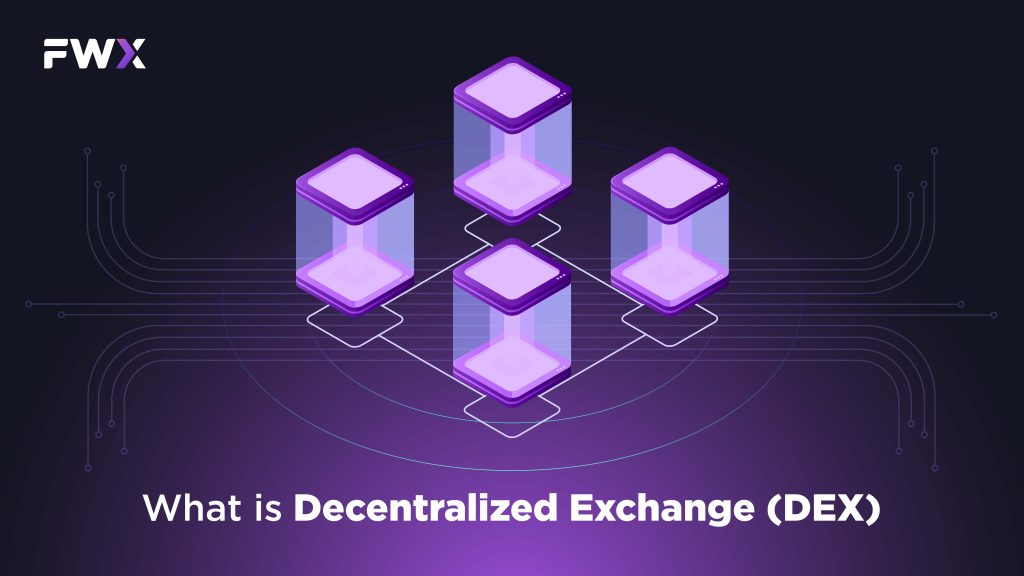
Decentralized exchanges, often referred to as DEXs, are platforms that allow users to trade cryptocurrencies directly with one another without the need for an intermediary or central authority. Unlike traditional centralized exchanges (CEXs), where orders are matched by a central party, DEXs operate through smart contracts on blockchain networks.
A Decentralized Exchange (DEX) is a type of cryptocurrency exchange that operates without a central authority or intermediary. Unlike traditional centralized exchanges (CEXs), where orders are matched and trades are executed by a central organization, DEXs facilitate peer-to-peer trading directly between users.
Here are the key characteristics and components of a Decentralized Exchange (DEX):
- Smart Contracts: DEXs typically rely on blockchain technology and smart contracts to automate and facilitate the trading process. Smart contracts are self-executing contracts with the terms of the agreement directly written into code. They act as the intermediary, managing and executing trades based on predefined conditions.
- Non-Custodial: In a DEX, users retain control of their funds at all times. Unlike centralized exchanges that require users to deposit their cryptocurrencies into exchange-controlled wallets, DEXs allow users to trade directly from their own wallets, reducing the risk of theft or hacking.
- Peer-to-Peer Trading: DEXs enable users to trade digital assets directly with one another. When a user wants to make a trade, they interact with the DEX’s platform or decentralized application (DApp), which connects them with other users looking to trade the same assets.
- Liquidity Pools: Many DEXs use liquidity pools to facilitate trading. Users can contribute their funds to these pools, providing liquidity in exchange for a share of trading fees. Liquidity pools enable the automatic execution of trades without the need for a centralized order book.
- Privacy and Anonymity: Some DEXs prioritize user privacy and may allow trading without extensive identity verification processes. This aligns with the principles of decentralization and privacy that are important to many cryptocurrency enthusiasts.
- Transparency: All transactions on DEXs are recorded on the underlying blockchain, providing full transparency and auditability. Users can verify trades and track the movement of assets on the blockchain.
- Multiple Blockchains: DEXs are often designed to support a variety of blockchain networks and assets. This allows users to trade different cryptocurrencies without the need for multiple exchange accounts.
- Integration with DeFi: Decentralized Exchanges play a central role in the decentralized finance (DeFi) ecosystem. They facilitate various DeFi activities, such as yield farming, lending, and borrowing, by providing liquidity and trading pairs for DeFi protocols.
While DEXs offer numerous advantages, such as increased security, reduced counterparty risk, and greater user control, they also face challenges, including liquidity issues, regulatory concerns, and user experience improvements. Nevertheless, DEXs have gained popularity as a key component of the cryptocurrency ecosystem, providing an alternative and more decentralized way for users to trade digital assets.
How Does DEX Work?
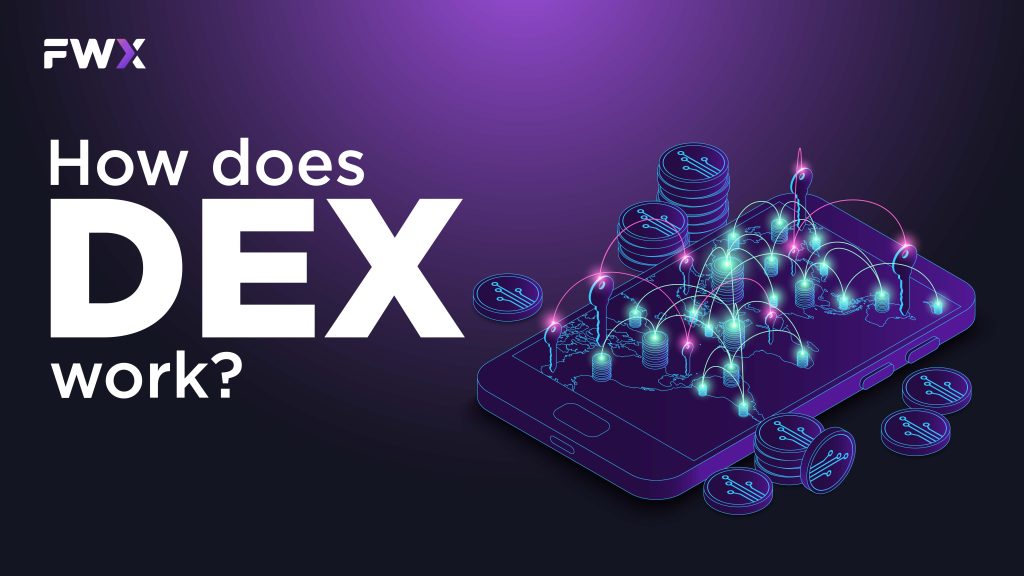
Decentralized Exchanges (DEXs) operate on the principles of blockchain technology, utilizing smart contracts to automate and facilitate the trading process. When a user wants to trade on a DEX, they interact with a decentralized application (DApp) that connects to the underlying blockchain. This DApp then interacts with the smart contract that manages the trading pair, executing the trade when the conditions are met. Here’s how DEXs typically work:
- Smart Contracts: DEXs rely heavily on smart contracts, which are self-executing contracts with predefined rules written in code. These smart contracts serve as the core infrastructure of the exchange and handle various aspects of trading, including order matching and fund transfers.
- User Wallets: To use a DEX, users need a compatible cryptocurrency wallet that allows them to control their private keys. These wallets are used to store their digital assets and interact with the DEX.
- Order Placement: Users access the DEX’s platform through a decentralized application (DApp) or website. They can create trading orders, specifying details like the cryptocurrency they want to buy or sell, the amount, and the price at which they are willing to trade. These orders are not stored on a centralized order book but rather on the blockchain in the form of smart contracts.
- Order Matching: When a user places an order on a DEX, it is not matched by a central party. Instead, the DEX’s smart contracts automatically match buy and sell orders based on the predefined conditions set by the users. For example, if someone wants to buy 1 Ethereum at a certain price, and another user wants to sell 1 Ethereum at that price, the smart contract facilitates the trade.
- Trade Execution: Once an order is matched, the DEX’s smart contract executes the trade by transferring the assets between the respective user wallets. This process ensures that the funds are swapped directly between the users involved in the trade.
- Liquidity Pools: Many DEXs use liquidity pools, where users can deposit their assets to provide liquidity for specific trading pairs. Liquidity providers earn fees from trades that occur in these pools. Users can trade against these liquidity pools, and the smart contract handles the price adjustments based on supply and demand.
- Fees: DEXs typically charge fees for trading and liquidity provision. These fees go to liquidity providers and are used to incentivize users to participate in the network.
- Transparency: All transactions and trading activity on a DEX are recorded on the underlying blockchain, providing complete transparency and auditability. Users can verify transactions and monitor their assets in real-time.
- Security: Since DEXs do not hold users’ funds and operate on the blockchain, they are less susceptible to hacks and exit scams compared to centralized exchanges. Users have full control over their private keys and assets.
- Interoperability: Some DEXs aim to support multiple blockchain networks and assets, allowing users to trade different cryptocurrencies without the need for multiple exchange accounts.
- User Experience: The user interface and experience on DEXs can vary, and some may require users to interact with cryptocurrency addresses and smart contracts, which can be less intuitive for beginners.
In summary, DEXs leverage blockchain technology, smart contracts, and user-controlled wallets to enable secure and decentralized cryptocurrency trading. They provide greater user autonomy and transparency while reducing counterparty risk. However, they may face challenges related to liquidity and user experience, which are areas of ongoing development and improvement within the DEX ecosystem.
Types of Decentralized Exchanges
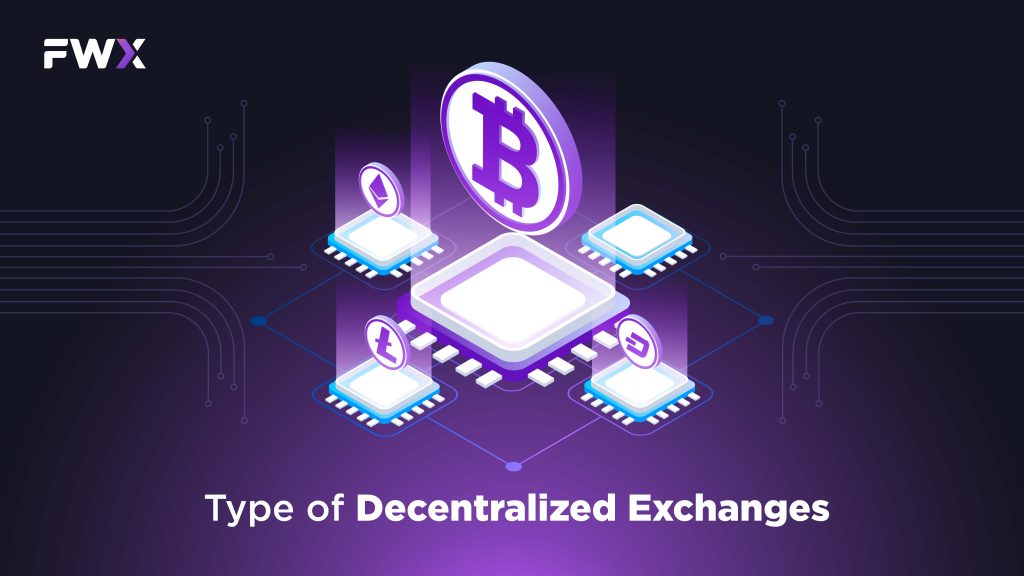
Decentralized Exchanges (DEXs) come in various forms, each with its own unique features and characteristics. Here are some common types of decentralized exchanges:
Automated Market Makers (AMMs)
AMMs are a popular type of DEX that relies on liquidity pools and mathematical formulas to determine asset prices. Users can provide liquidity to these pools in exchange for a share of trading fees. Uniswap and SushiSwap are well-known examples of AMMs.
Order Book DEXs: Some DEXs operate with an order book model similar to centralized exchanges. Users can place limit and market orders, and the DEX matches these orders based on price and time priority. Examples include Loopring and DDEX.
Atomic Swap DEXs
Atomic swap DEXs enable users to directly exchange one cryptocurrency for another without the need for an intermediary or escrow service. These exchanges rely on atomic swap technology, which ensures that either the entire trade is executed or none of it is. Komodo’s AtomicDEX is an example of this type of exchange.
Cross-Chain DEXs
These DEXs facilitate the trading of assets from different blockchain networks. They use bridging technologies to enable interoperability between blockchains. Examples include THORChain and Polkadot’s XCMP (Cross-Chain Message Passing) protocol.
Wrapped Tokens DEXs
Some DEXs operate on a single blockchain network but allow users to trade wrapped tokens representing assets from other blockchains. For instance, Wrapped Bitcoin (WBTC) on the Ethereum network is an ERC-20 token that represents Bitcoin and can be traded on Ethereum-based DEXs.
Layer 2 DEXs
Layer 2 solutions like Optimistic Rollups and Plasma chains can be used to build DEXs that offer faster and cheaper transactions by processing most of the trading activity off the main blockchain. Loopring and zkSwap are examples of layer 2 DEXs.
DeFi Aggregators: While not DEXs in the traditional sense, DeFi aggregators like 1inch and Matcha aggregate liquidity from multiple DEXs to provide users with the best possible trade execution across various decentralized liquidity sources.
Token Swap Services
These are simple DEXs that focus primarily on token swaps. Users can exchange one token for another directly on these platforms. Examples include Kyber Network and Bancor.
DEX Protocols
Some DEXs function as protocols that provide the infrastructure for developers to build their decentralized exchange applications. 0x and Kyber Network started as protocols but also have their own user interfaces.
Community and Social DEXs
These DEXs may incorporate social and community-driven features, allowing users to engage in discussions, signal support for tokens, and participate in governance decisions. They aim to combine social elements with trading. Uniswap’s governance token, UNI, introduced governance features to the platform.
Anonymous DEXs
These DEXs prioritize user privacy and anonymity by not requiring extensive KYC (Know Your Customer) verification. They cater to users who value privacy in their cryptocurrency trading activities.
What are the benefits of Decentralized Exchange?
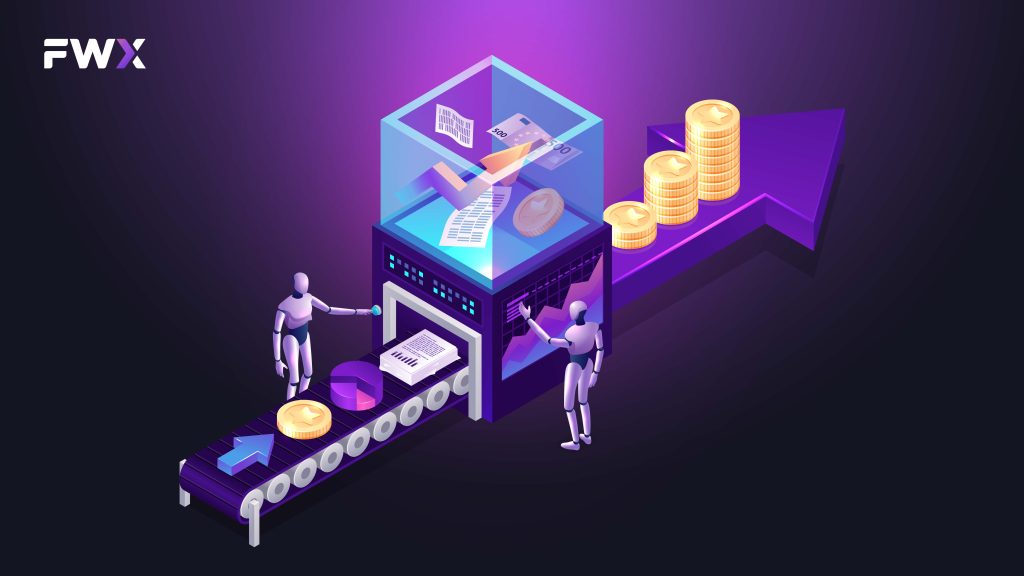
Decentralized Exchanges (DEXs) offer a range of benefits that make them an attractive option for cryptocurrency traders and users. Here are some of the key advantages of using decentralized exchanges:
- Enhanced Security: DEXs are often considered more secure than centralized exchanges because they don’t require users to deposit their funds into a central entity’s custody. Users retain control of their private keys and assets, reducing the risk of hacking, exit scams, or security breaches associated with centralized exchanges.
- Reduced Counterparty Risk: In a DEX, users trade directly with one another through smart contracts on the blockchain, eliminating the need to trust a centralized exchange with their assets. This reduces the risk of insolvency or mismanagement by exchange operators.
- Privacy and Anonymity: Many DEXs prioritize user privacy by not requiring extensive Know Your Customer (KYC) verification. Users can trade cryptocurrencies with a higher degree of anonymity, which aligns with the principles of decentralization and privacy valued by many in the cryptocurrency community.
- Transparency: All transactions on DEXs are recorded on the underlying blockchain, providing complete transparency and auditability. Users can verify trades, track the movement of assets, and monitor the exchange’s activity in real-time.
- User Control: DEXs give users full control over their funds and trading decisions. Users can initiate trades and manage their assets directly from their wallets, aligning with the ethos of self-sovereignty in the cryptocurrency space.
- Liquidity Pools: Many DEXs use liquidity pools, which enable users to provide liquidity in exchange for a share of trading fees. This mechanism ensures that there is always liquidity available for trading, and users can earn rewards by participating.
- Interoperability: Some DEXs support trading across different blockchain networks, promoting interoperability between various cryptocurrencies. This eliminates the need for multiple exchange accounts and facilitates cross-chain asset swaps.
- Censorship Resistance: DEXs are often more resistant to censorship than centralized exchanges because they are decentralized and operate on blockchain networks. This makes it difficult for authorities or third parties to shut down or restrict access to the exchange.
- Global Accessibility: DEXs are accessible to users around the world, provided they have an internet connection and compatible cryptocurrency wallets. They are not subject to geographical restrictions or limitations.
- Innovation and Token Listings: DEXs are at the forefront of innovation in the cryptocurrency space, with many new projects and tokens launching on these platforms. This provides users with access to a wide range of digital assets and DeFi products.
- Community Governance: Some DEXs incorporate governance tokens that allow users to participate in decision-making processes regarding the platform’s development, upgrades, and changes. Users have a say in the platform’s direction.
While DEXs offer numerous advantages, they also face challenges, including liquidity issues, regulatory concerns, and user experience improvements. Additionally, the choice of DEX may impact the specific benefits a user experiences, as each DEX can have its unique features and limitations. Nevertheless, the decentralized nature of these exchanges aligns with the core principles of blockchain technology and cryptocurrencies, making them an important part of the evolving cryptocurrency ecosystem.
Risks of DEX
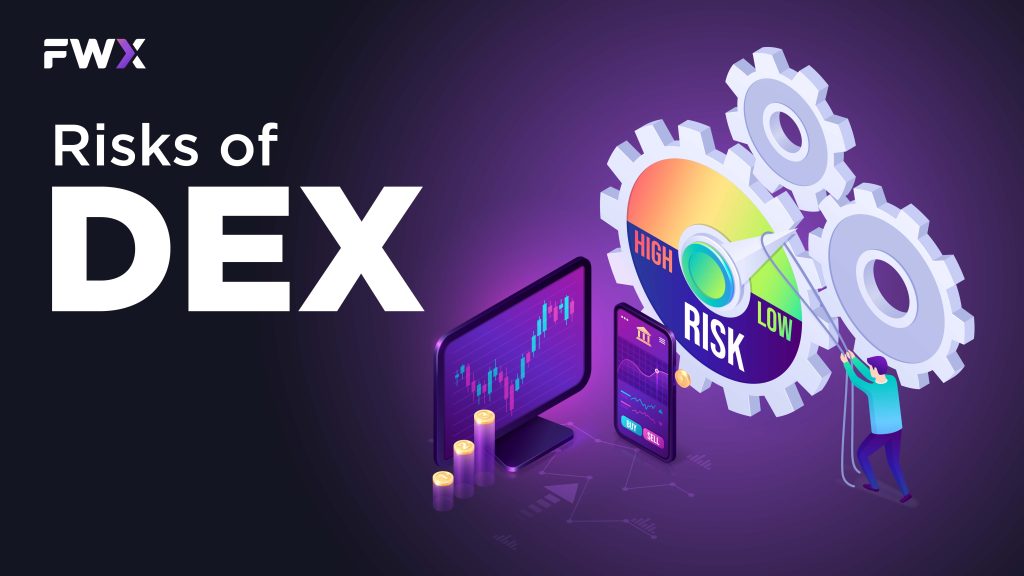
While Decentralized Exchanges (DEXs) offer numerous advantages, they also come with certain risks and challenges that users should be aware of before engaging in trading or other activities on these platforms. Here are some of the key risks associated with DEXs:
- Smart Contract Risks: DEXs rely on smart contracts to facilitate trades. Smart contracts are computer programs, and like any software, they can contain bugs or vulnerabilities. If a smart contract has a flaw or is exploited by malicious actors, it can result in the loss of user funds.
- Liquidity Challenges: Many DEXs, especially smaller or newer ones, may face liquidity issues, making it challenging to execute large trades without significantly affecting asset prices. Low liquidity can also lead to slippage, where the executed price differs from the expected price.
- Impermanent Loss: Liquidity providers in DEXs face the risk of impermanent loss. This occurs when the value of the assets they provided to a liquidity pool changes relative to each other while they are providing liquidity. Impermanent loss can result in reduced returns compared to simply holding the assets.
- User Experience: DEXs can have complex user interfaces and may require users to interact with cryptocurrency addresses and smart contracts. This can be less intuitive for beginners, leading to user errors or misunderstandings.
- Regulatory Uncertainty: The regulatory status of DEXs varies by jurisdiction, and in some regions, they may operate in a regulatory gray area. Users should be aware of the legal and tax implications of using DEXs in their respective countries.
- Front-Running and Miner Extractable Value (MEV): Some DEXs may be susceptible to front-running, where malicious actors exploit the order of transactions to profit unfairly. Additionally, certain blockchain networks enable miners to extract value from transactions, potentially impacting the fairness of trading.
- User Errors: Due to the decentralized nature of DEXs, users are solely responsible for their actions. Mistakenly sending assets to the wrong address, setting incorrect transaction fees, or interacting with malicious contracts can result in the loss of funds.
- Limited Asset Selection: DEXs may not support all cryptocurrencies or tokens available on centralized exchanges. Users might not find the same breadth of trading pairs or access to certain assets.
- Rug Pulls and Scams: While DEXs themselves do not hold user funds, some DeFi projects and tokens listed on DEXs may turn out to be fraudulent or scams. Users should exercise caution and conduct thorough research before participating in any DeFi project.
- Interoperability Risks: Cross-chain or interoperable DEXs can face additional technical challenges and risks associated with bridging different blockchain networks. These include potential vulnerabilities in bridging technology or network-specific issues.
- User Education: Users may lack a proper understanding of how DEXs work, which can lead to mistakes, loss of funds, or susceptibility to phishing attacks. Education and awareness are crucial for safe usage.
To mitigate these risks, users should exercise caution, conduct due diligence, and take appropriate security measures when using DEXs. This includes using reputable DEX platforms, verifying smart contract code, using hardware wallets, enabling two-factor authentication, and staying informed about the latest developments and best practices in the decentralized finance (DeFi) space. Additionally, users should only invest funds they can afford to lose and consider diversifying their assets to spread risk.
Conclusion
Decentralized exchanges are at the forefront of transforming the cryptocurrency trading landscape. With their emphasis on security, user control, and transparency, they offer a promising alternative to centralized exchanges. While they face challenges, the ongoing development of technology and growing interest in DeFi suggest that decentralized exchanges will continue to play a pivotal role in the future of finance.
In this article, we have explored the fundamental concepts of DEXs, their advantages, limitations, and the path forward. As the cryptocurrency space evolves, decentralized exchanges are poised to revolutionize how we trade digital assets, empowering users and reshaping the financial industry.


